#Tour de France Automobile
Explore tagged Tumblr posts
Text

ferrari 250 GT/64 Lusso Compétition spécifications 5367GT Tour de France Auto 1964. - source Classic Ferrari's Road & Track.
98 notes
·
View notes
Photo
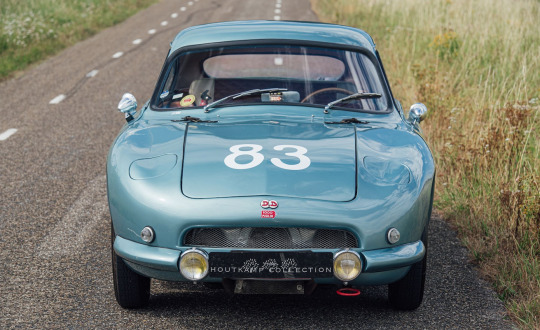
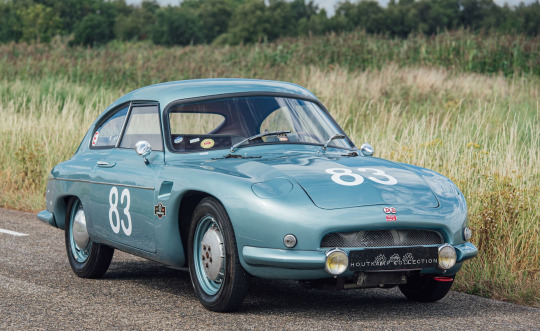


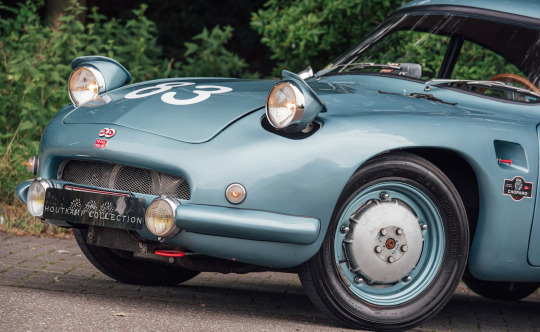
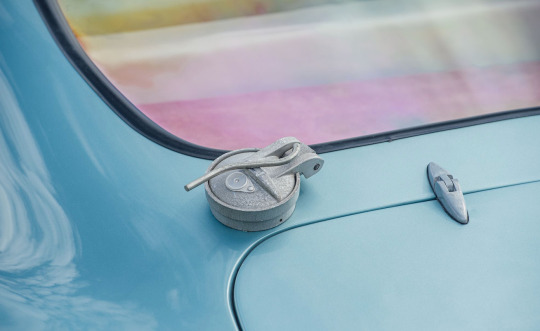
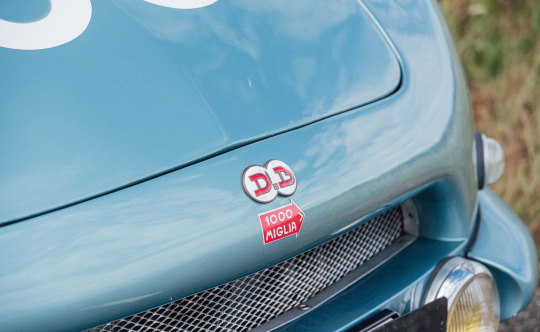

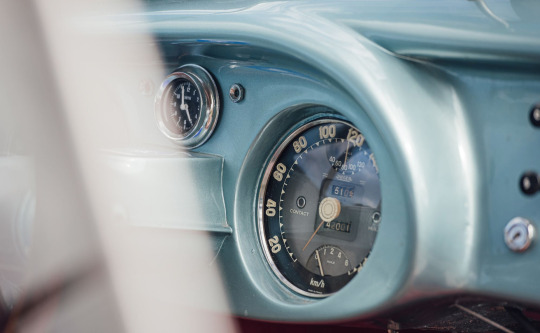

DB Panhard HBR 5
A symbol of a bygone era when a few talented craftsmen could start in the world's greatest events, the manufacturer D.B. has won nearly 1,000 races and can boast of being the French manufacturer with the highest number of entries in the Le Mans 24 Hours to date! Born in 1932 from the meeting of two car racing enthusiasts: Charles Deutsch, a polytechnic engineer and René Bonnet, an ingenious mechanic and mechanic, Les Automobiles Deutsch and Bonnet (D.B.) built profiled racing cars with Citroën mechanics before presenting their first passenger car at the 1950 Paris Motor Show. But it was in 1954 that the idea of building a small French GT - which would thus benefit from the reputation acquired on the circuits - began to make its way. Built on an extremely rigid beam chassis and equipped with a plastic body (1st French car in polyester glass laminate), the HBR 5 coach will be produced until the end of the Deutsch et Bonnet association in 1961. It benefits from the excellent 850cc flat-twin air-cooled 850cc flat-twin from the Panhard Dyna Z, reworked by René Bonnet. The latter has equipped it with special intake manifolds, a more efficient camshaft, reinforced valve springs and a new exhaust system. With a higher compression ratio and a dual-body Zenith carburetor, it develops 58 horsepower compared to 42 in the standard sedan. The HBR5 will also be supported by a more advanced version, the "Super Rallye", with a twin engine pushed to 954 cm3 giving 72 rides. This coach was a great success because he had exceptional roadholding and enduring braking at the time. The HBR5 coach will win many category victories in most major events such as the Tour de France Automobile, Targa Florio, Mille Miglia, Les 24 Heures du Mans, the Monte-Carlo rally and the Liège-Rome-Liège.
#DB Panhard HBR 5#Charles Deutsch#René Bonnet#Le Mans 24 Hours#Tour de France Automobile#Targa Florio#Mille Miglia#Monte-Carlo rally#Liège-Rome-Liège#Citroën
85 notes
·
View notes
Text







1957 250 GT LWB Berlinetta ‘Tour de France’ with coachwork by Zagato
#Ferrari#1957 250 GT LWB Berlinetta ‘Tour de France’ with coachwork by Zagato#automobile#car#sports car#classic sports car#Italian sports car#luxury#luxury car#luxury living#luxury lifestyle#rich#expenisve#sexy
14 notes
·
View notes
Video
79 - Lancia Stratos Gr.IV de 1974 by Laurent Quérité Via Flickr: Tour Auto 2023 Pilote : Bernard FIGUIERE Copilote : Isabelle GODIN Col de la Madeleine D19 Vaucluse France IMG_3437
#Canon EF 300mm f/4L IS USM#CanonFrance#Canonphotography#Canon EOS 5D Mark II#Voiture#Automobile#Cars#carlovers#carphotography#Tour Auto 2023#Peter Auto#Classic Car#Historic Rally#Col de la Madeleine#Vaucluse#France#Laurent Quérité#Lancia#Lancia Stratos#flickr
7 notes
·
View notes
Text






Muriel Thompson a decorated Scottish World War I ambulance driver, racing driver and suffragist was born on this day 1875.
Thompson was born on 10th June 1875 in Aberdeen, Scotland to Agnes Marion Williamson, the second wife of Cornelius Thompson, a shipowner and marine architect. She was the fifth of eight children. Her grandfather George Thompson had been Lord Provost of Aberdeen and an MP for the city.
Thompson was an avid motorist, and from an early age she drove the family car. She and her brothers helped found the Brooklands Automobile Racing Club. On 4 July 1908 she won the first ladies’ motor race held at Brookland, the Ladies’ Bracelet Handicap, she caused quite a stir by beating the wife of the racetrack’s owner with metres to spare.
After the race, Muriel was greeted by cries of “women deserve the vote now!” She agreed, and was hired as a chauffeur by the Women’s Social and Political Union. Driving a green Austin with white wheels and purple stripes – the suffragette colours – she took Emmeline Pankhurst on her 1909 national tour
Her daredevil driving skills proved lifesaving during the First World War. In 1915, she signed up to the First Aid Nursing Yeomanry, and us Scots must have a slight snigger at the acronym, FANY.
Three months later, she was awarded the Knight’s Cross of the Order of Leopold II by King Albert of Belgium for evacuating wounded soldiers under fire. Alongside her Calais convoy, in 1917, she became one of the first women to drive for the British Army, who had until that point refused FANY’s services.
Thompers, as her colleagues called her, kept meticulous diaries while abroad. They reveal the horrors of war, but also the camaraderie and independence she experienced.
Muriel saved hundreds of lives during the war. In January 1918, she became Commanding Officer of the newly-formed St Omer convoy, and was awarded the Military Medal and the Croix de Guerre for her fearless fight to evacuate the injured during air raids.
Muriel returned to Britain two months before the war ended and resigned from FANY in 1922 – she was one of the bravest and best they had. Muriel died a few months before the Second World War broke out.
Photos are of Muriel Thompson and her medals include: Military Medal 1914-18; 1914-15 Star; British War Medal 1914-20; Allied Victory Medal 1914-19 with oak leaf for Mentioned in Dispatches; Order of Leopold II, Belgium, 1914-18, Badge of the 5th Class; Croix de Guerre, France 1914-18.
18 notes
·
View notes
Text

MICHÈLE MOUTON at the 1977 TOUR DE FRANCE AUTOMOBILE
25 notes
·
View notes
Text

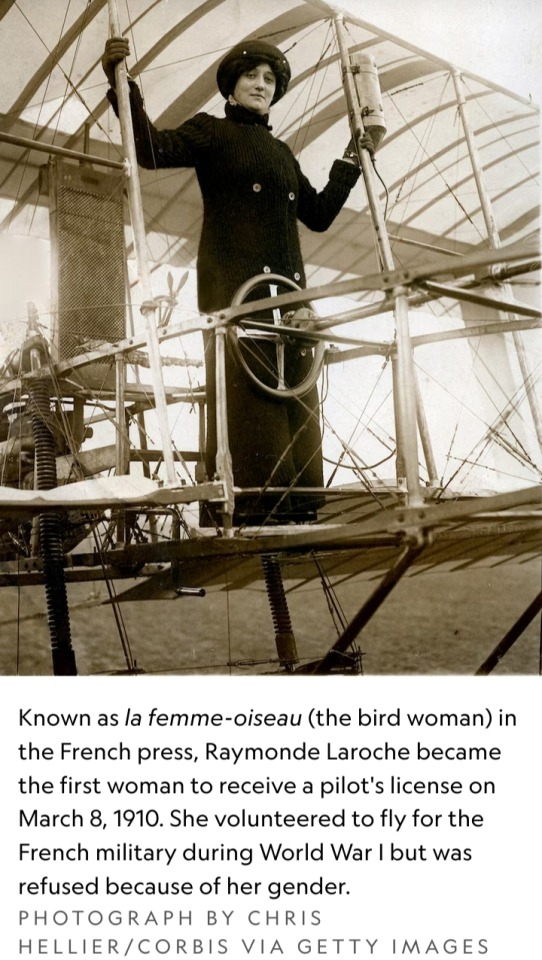
By Rachel Hartigan
Published: 9 March 2023
The history of the first women who flew is a tale of breathtaking bravery and lives cut tragically short.
On 8 March 1910 — 113 years ago today — Raymonde de Laroche, a former Parisian stage actress, became the first licensed female pilot in the world.
Nine years later, she was killed when the experimental aircraft she was flying dove into the ground.
Harriet Quimby, a well-known journalist, became the first American woman to obtain a pilot’s license in 1911.
She died a year later when her new plane pitched her into Boston Harbor.
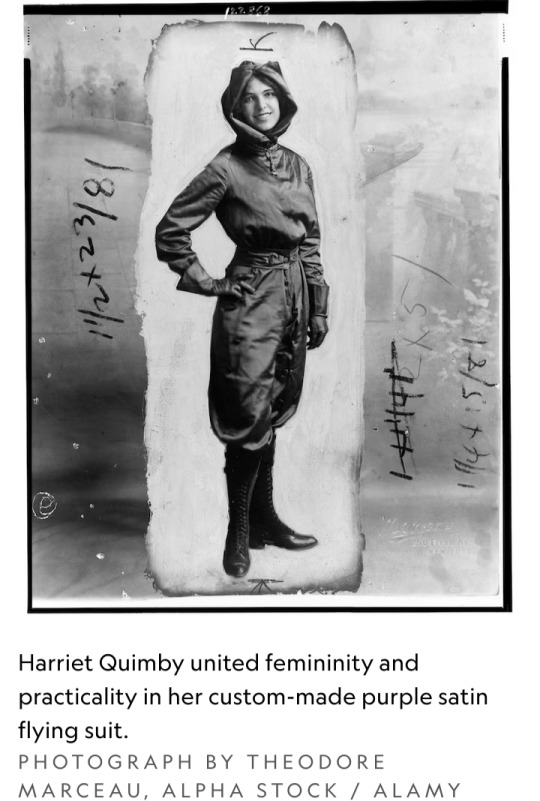
In 1921, Bessie Coleman was the first Black woman to receive a pilot’s license — she had to travel to France to find a flight school that would teach her.
But five years later, she was killed when a wrench got caught in her plane’s controls, sending the plane plummeting.
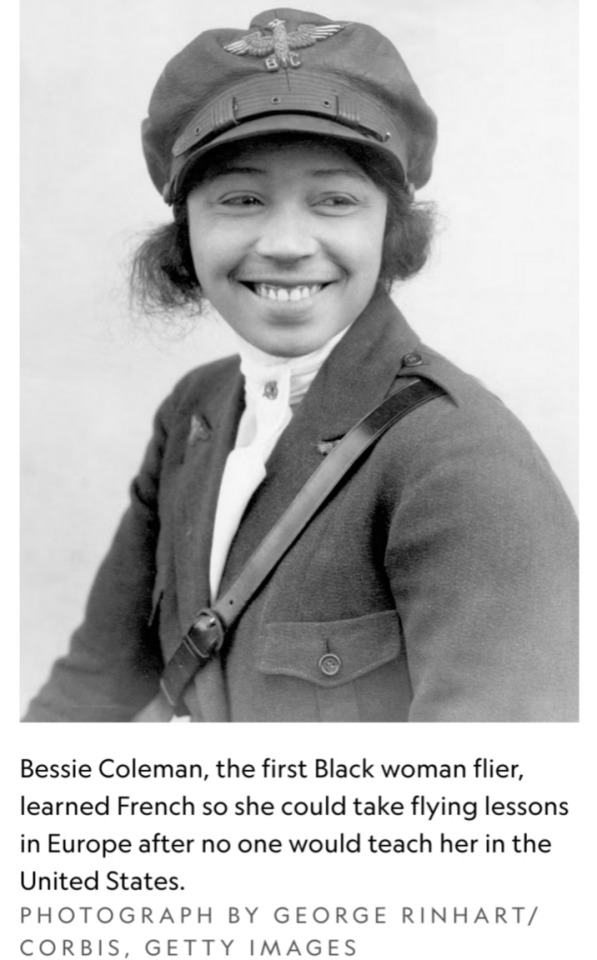
Flying was perilous in aviation’s earliest days.
"The planes were flimsy contraptions fashioned from bamboo, wire and fabric,” according to the late historian Eileen Lebow.
They didn’t have seat belts or even a roof to hold the pilot should the aircraft flip over.
Yet women like Laroche, Quimby and Coleman were willing to risk their lives for the freedom that flights promised.
“Aviation was a new profession seemingly free from the gender expectations and sex typing that limited women elsewhere,” noted historian Susan Ware at the National Air and Space Museum’s inaugural Amelia Earhart Lecture in Aviation History in 2022.
“Women were getting in at the beginning.”
For many of them, the thrill of flying was intoxicating but so was the opportunity to be assessed on their own merits.
“These women wanted to be judged as human beings rather than as women,” says Ware.
Coleman especially saw flight as a path toward broader gender and racial equality.
"I knew we had no aviators, neither men nor women, and I knew the Race needed to be represented along this most important line,” she said shortly after she returned to the United States from France in 1921.
“I thought it my duty to risk my life to learn aviating and to encourage flying among men and women of the Race who are so far behind.”
Before she died, she’d planned to open a flight school that would welcome African American aviators.
Many early women fliers shared the dream that achievement in this field would lead to more independence.
As one journalist and amateur pilot wrote in 1930, “A woman who can find fulfillment in the skies will never again need to live her life in some man’s spare moments.”

Some of that independence would come from the ease of travel that aviation promised in its earliest incarnation.
Many people, including Amelia Earhart, believed at first that airplanes would become as commonly owned by families as bicycles and automobiles already had.
Other women embraced the financial independence that they thought the new field would offer.
Neta Snook, whose first solo flight was in a plane she rebuilt, made her living by offering up her plane for aerial advertising, test flying experimental aircraft, taking paying passengers up for aerial tours, and teaching beginning fliers, including Earhart.
Gladys Roy, on the other hand, earned good money as a stunt pilot, dancing the Charleston and playing tennis on the wings midflight for amazed crowds at air shows.
(Snook retired from aviation when she became pregnant in her mid-twenties and lived to be 95; Roy died at 25 when she accidentally stepped into a propeller.)
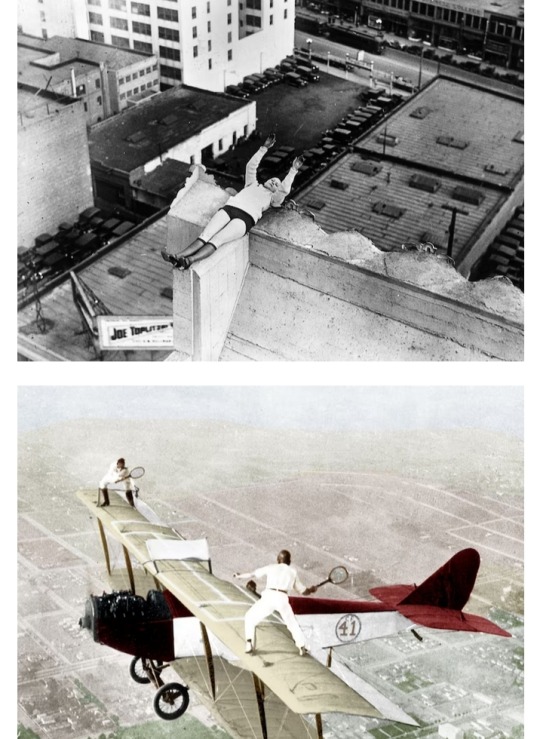

Sisters Katherine and Marjorie Stinson took a more long-term approach, establishing a flight school in Texas with their mother and brother that trained, among others, Canadian pilots in the run up to World War I.
When the U.S. entered the war, the country’s civil aviation — including the Stinson School for Flying — was shut down.
Katherine went to Europe to serve as an ambulance driver while Marjorie became an aeronautical draftsman for the Navy.
War and the development of commercial aviation conspired to dampen women’s hopes of equality in the air.
Experienced women pilots such as LaRoche and Katherine Stinson volunteered to serve in their countries’ nascent air forces during World War I.
They were denied, the military preferring to train unseasoned men.
The same pattern occurred in World War II, although Women’s Airforce Service Pilots (WASPs) did ferry U.S. military planes as civilian pilots during the conflict.
(The Soviet Union, however, had three female air combat regiments.)
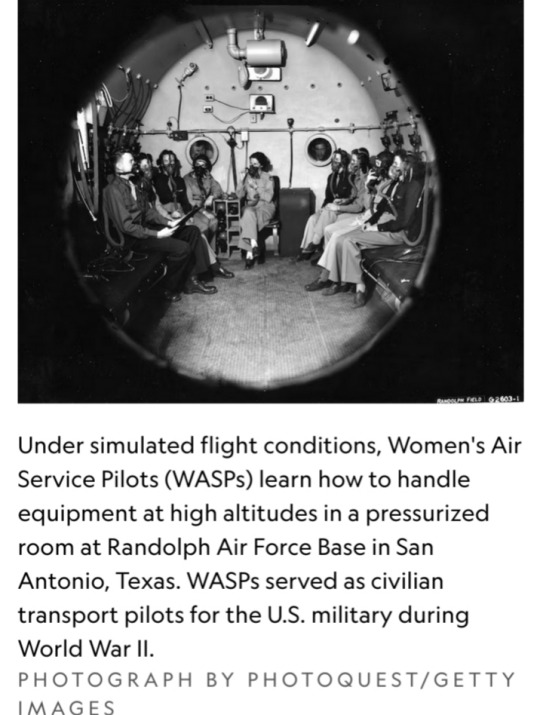
The dream of every family owning a private plane never did materialize; the infrastructure required would have been too extensive.
Instead, the commercial aviation industry developed, hiring men — many of whom had been trained as pilots by the military.
It was no use pointing out, as Earhart did, that "if women had access to the training and equipment men had we could certainly do as well."
Helen Richey became the first female commercial pilot in 1934 but was hounded out of her job.
The U.S. Commerce Department, under pressure from the all-male pilots’ union, decreed that women weren’t allowed to fly scheduled routes in bad weather.
(They’d previously considered “grounding female pilots for nine days a month during menstruation,” according to Ware).
There wouldn’t be another female commercial pilot until 1973, when Emily Howell Warner was hired by Frontier.
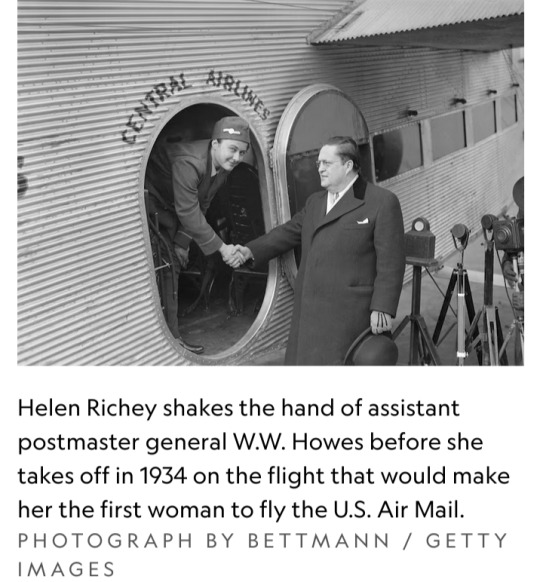
#Raymonde de Laroche#Harriet Quimby#Bessie Coleman#Eileen Lebow#Susan Ware#National Air and Space Museum#Amelia Earhart#Neta Snook#Gladys Roy#Katherine and Marjorie Stinson#Women’s Airforce Service Pilots (WASPs)#Helen Richey#Emily Howell Warner#female pilot#International Women's Day#International Women's Month#National Geographic#Nat Geo
52 notes
·
View notes
Text

1933, 28 mai, Montlhéry, Tour de France automobile et motocycliste, Gillot sur F.N. 500 cmc
2 notes
·
View notes
Text
History And Benefits of Bicycle/Bikes
Bicycles have long been more than just a mode of transportation; they embody a sense of freedom, efficiency, and environmental consciousness that has made them enduring icons of mobility. From humble beginnings in the early 19th century to the sophisticated machines of today, bicycles have evolved significantly, shaping cultures and lifestyles around the world.
Historical Evolution
The history of bicycles traces back to the early 1800s when the first mechanically driven two-wheel vehicle, known as the 'dandy horse' or 'velocipede,' appeared in Europe. This rudimentary contraption, propelled by pushing off the ground with the feet, sparked a wave of innovation that led to the invention of the modern bicycle.
In the mid-19th century, French metalworker Pierre Michaux and his son Ernest Michaux developed the pedal-driven velocipede, known as the boneshaker for its uncomfortable ride over rough terrain. Subsequent designs saw improvements in comfort and efficiency, with the introduction of the high-wheel bicycle (or penny-farthing) in the 1870s, which featured a large front wheel and a smaller rear wheel. This design was later replaced by the safety bicycle in the 1880s, which closely resembles the bicycles we ride today, with equally sized wheels and a chain-driven rear wheel.
Modern Innovation and Varieties
Today, bicycles come in a staggering array of designs tailored for different purposes and terrains. Road bikes, built for speed and efficiency on paved surfaces, feature lightweight frames and thin, smooth tires. Mountain bikes, on the other hand, are rugged machines equipped with shock absorbers and knobby tires designed to handle off-road trails and rugged terrain. Hybrid bikes blend features of road and mountain bikes, offering versatility for both urban commuting and recreational riding.
Recent decades have seen the rise of specialized bikes such as fat bikes with oversized tires for riding on sand or snow, and electric bikes (e-bikes) equipped with battery-powered motors to assist with pedaling, offering a viable alternative for commuters and recreational cyclists alike.
Benefits of Cycling
Beyond their mechanical innovations and diverse designs, bicycles offer numerous benefits to individuals and society as a whole. Cycling promotes physical fitness and cardiovascular health, providing a low-impact aerobic workout that strengthens muscles and improves coordination. Regular cycling is associated with reduced risk of obesity, heart disease, and other chronic illnesses.
From an environmental perspective, bicycles are one of the most sustainable forms of transportation, emitting zero greenhouse gases and requiring minimal resources to manufacture compared to automobiles. Cycling reduces traffic congestion, noise pollution, and the demand for parking spaces in urban areas, contributing to cleaner, more livable cities.
Cultural Impact and Community
Bicycles have also left an indelible mark on culture and society. They have been embraced as symbols of youthfulness, independence, and adventure, inspiring countless films, artworks, and literary works. Events like the Tour de France have elevated cycling to the status of a highly competitive sport, showcasing the endurance and skill of professional athletes on a global stage.
In cities worldwide, the cycling community has grown into a vibrant subculture, fostering camaraderie among enthusiasts through group rides, bike clubs, and advocacy efforts to promote cycling infrastructure and safety. Cycling events and festivals celebrate the joy of riding and raise awareness about the benefits of cycling for individuals and communities alike.
Conclusion
In conclusion, bicycles have transcended their humble origins to become icons of sustainable transportation, physical fitness, and cultural significance. Their evolution continues to be driven by innovations in technology, materials, and design, ensuring that bicycles remain relevant and accessible for generations to come. Whether for commuting, recreation, sport, or adventure, bicycles continue to embody the spirit of freedom and exploration that captivates riders worldwide.
2 notes
·
View notes
Text
Cruising Through Dreams: Bucket List Classic Car Events Around the World
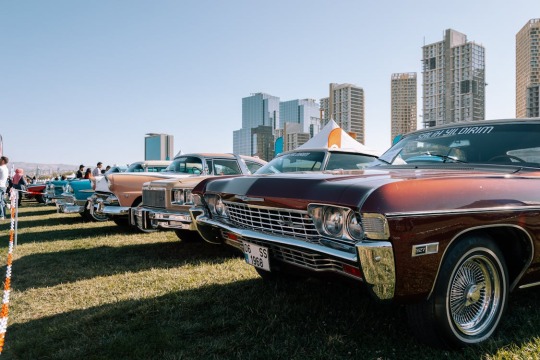
Fasten your seatbelts, my fellow motor enthusiasts! We’re about to embark on an exhilarating adventure through the globe’s most iconic classic car events. From the heart-pounding roar of engines on Europe’s legendary circuits to California’s sun-kissed streets, these must-attend events are guaranteed to fuel your passion for vintage motoring. Whether you’re a seasoned aficionado or just daydreaming about owning a classic car one day, these events offer a sneak peek into the very essence of automotive history. So, don your driving gloves and join us as we journey through the ultimate classic car experiences worldwide!
1. Goodwood Festival of Speed
West Sussex, England
Tucked away in the undulating landscapes of West Sussex, England, lies the Goodwood Festival of Speed — a paradise for car lovers. This annual spectacle presents a breathtaking collection of classic cars, from timeless racers to contemporary supercars, all vying for glory on the legendary Hillclimb course. Goodwood seamlessly weaves together nostalgia and exhilaration, promising an indelible experience for devotees across generations. Picture yourself delving into the rich legacy and sophistication of classic automobiles at events like this one. Pearl Lemon Classics crafts bespoke experiential tours that transport enthusiasts on immersive journeys through the magnificence of classic cars and iconic racing events throughout the UK and Europe. Embrace this opportunity to live your passion!
2. Monterey Car Week
Monterey, California, USA
Every August, the charming coastal town of Monterey, California, transforms into a grand stage for one of the world’s most esteemed classic car events. Monterey Car Week is not just an event; it’s a week-long celebration of automotive brilliance that captures hearts worldwide. From prestigious concours d’elegance to heart-pounding races at Laguna Seca and awe-inspiring auctions where vintage gems find new homes, every moment is steeped in excitement and elegance. Whether you’re marvelling at rare Ferraris on the Pebble Beach Golf Links or embarking on a nostalgic journey along 17-Mile Drive in your own classic car, Monterey Car Week is an absolute must for any car aficionado. With Pearl Lemon Classics, you can immerse yourself in this glamourous spectacle through tailor-made tour packages that promise more than just experiences — they create timeless memories filled with history, sophistication and thrill!
3. Le Mans Classic
Le Mans, France
For those whose hearts beat faster at the thought of endurance racing, there’s no event that compares to the Le Mans Classic. Held every two years on the legendary Circuit de la Sarthe in France, this event is a magnificent homage to motorsport’s golden age. It showcases a captivating collection of vintage race cars, each competing for honour on a track steeped in history and tales of triumph and tragedy. Whether you’re basking in the thunderous symphony of classic prototypes from the grandstands or soaking up the electric atmosphere in the bustling paddock, Le Mans Classic is an adventure that every racing enthusiast should experience. Picture yourself standing amidst history at Circuit de la Sarthe, where Pearl Lemon Classics offers exclusive insights and access to private collections — ensuring an immersive experience at events like Le Mans Classic that truly encapsulate vintage motoring’s timeless allure.
4. Woodward Dream Cruise
Detroit, Michigan, USA
Heralded as the globe’s grandest one-day car festival, the Woodward Dream Cruise is an unparalleled homage to American automotive heritage. Each August, a cavalcade of classic cars invades Detroit’s historic Woodward Avenue, morphing it into a dynamic exhibition of motoring milestones. From brawny muscle cars to sizzling hot rods, and from vintage trucks to bespoke cruisers — the Dream Cruise is a visual and auditory banquet. It offers live music, culinary delights and boundless chances for reminiscing with fellow aficionados. Immerse yourself in exhilarating events like the Woodward Dream Cruise with Pearl Lemon Classics — nurturing a community of passionate enthusiasts and crafting unforgettable experiences within the pulsating realm of retro motoring.
5. Classic Days Schloss Dyck
Jüchen, Germany
Imagine being enveloped by the serene beauty of North Rhine-Westphalia, Germany, where Schloss Dyck stands majestically as the stage for one of Europe’s most esteemed classic car events. Classic Days Schloss Dyck is more than a weekend event; it’s a jubilant celebration of automotive history that captivates and thrills. From admiring the timeless elegance of pre-war classics to experiencing the heart-pounding excitement of vintage race cars in action, Schloss Dyck offers an all-encompassing journey into automotive heritage for enthusiasts across generations. Picture yourself at Classic Days Schloss Dyck, where Pearl Lemon Classics nurtures a passionate community and provides personalised attention, crafting indelible memories in the enchanting realm of vintage motoring.
As we draw the curtain on our thrilling journey through the world’s most coveted classic car events, it becomes resoundingly evident that the fervour for vintage motoring is a universal phenomenon. Whether you’re meticulously planning your next escapade or simply harbouring dreams of one day possessing a classic beauty, remember that an exhilarating world of vintage motoring stands ready to set your passion ablaze and fuel your aspirations. With organisations like Pearl Lemon Classics offering bespoke tours tailored to enthusiasts craving immersive experiences amidst majestic classic cars and iconic racing events, the opportunities are boundless. So come along! Let’s revel in the timeless legacy of classic cars and salute the vibrant community of enthusiasts who keep the flame of vintage motoring burning brightly!
4 notes
·
View notes
Text

Jo Schlesser - Ferrari 250 GT SWB - 2éme du Tour de France Automobile 1960 avec Pierre Dumay. - source Moto Vitelloni - Wheels n' wings.
31 notes
·
View notes
Text
Tour Auto 2023 - Le chronomètre fait office d’arbitre

Le Tour Auto réservé en priorité aux voitures qui ont participé au Tour de France Automobile entre 1951 et 1973.
Le Tour Auto - une course de voitures qui a été créée en 1899 et qui était connue sous le nom de Tour de France Automobile. C'est la plus ancienne course automobile encore en cours aujourd'hui ! Galerie - Tour Auto 2023

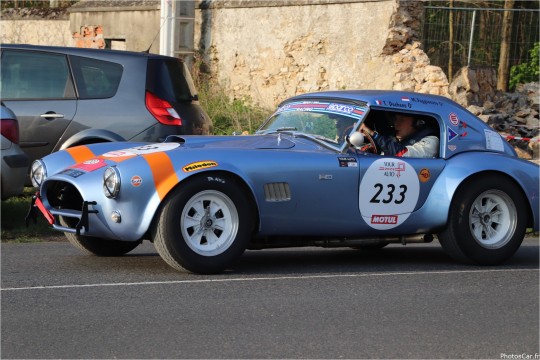
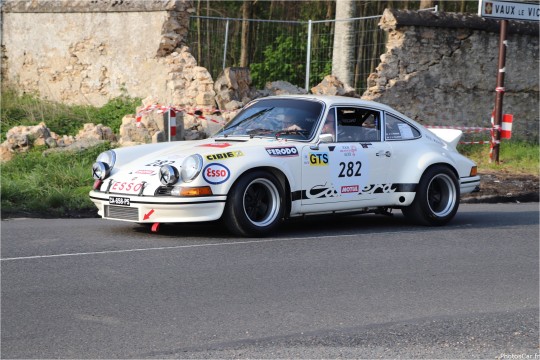
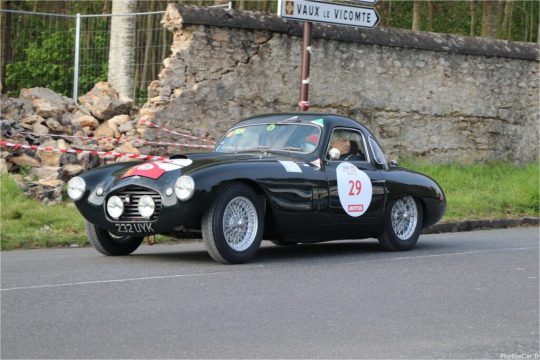
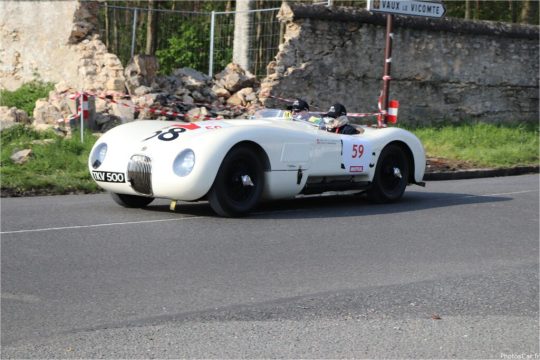





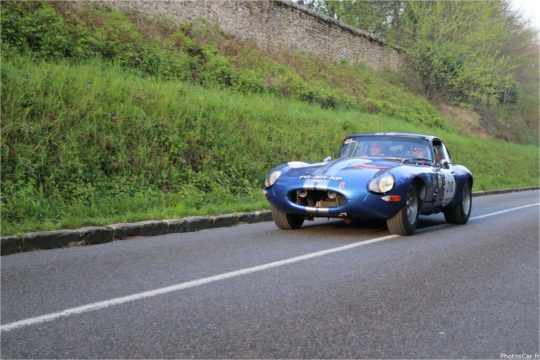


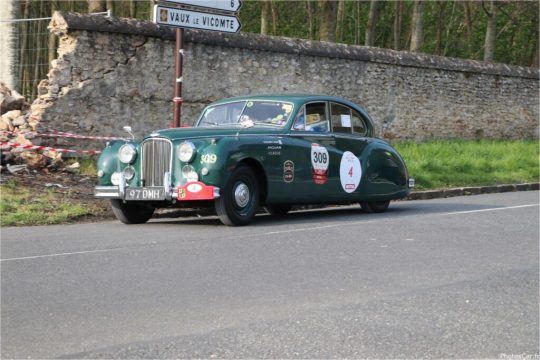


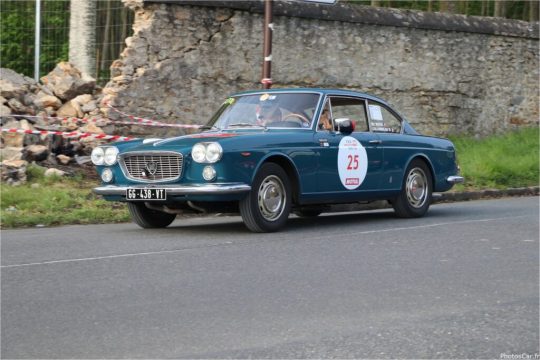
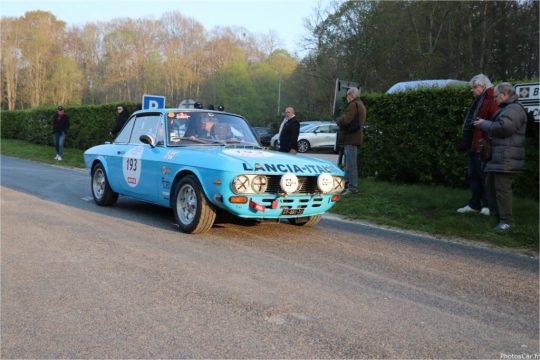
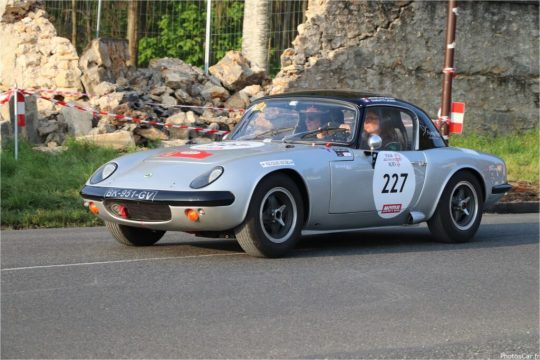
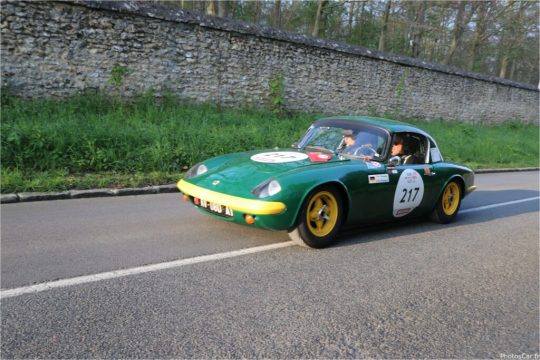
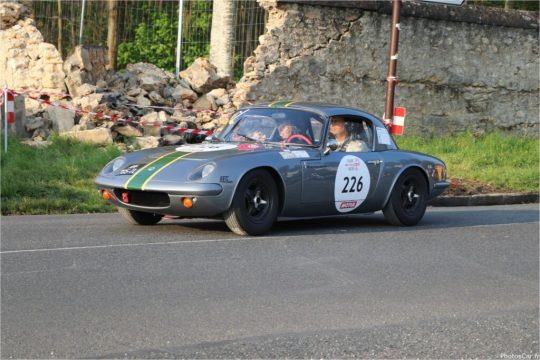
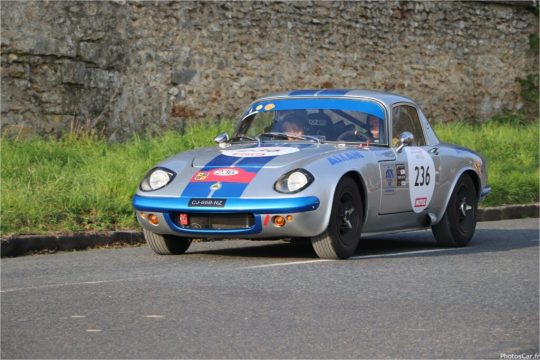
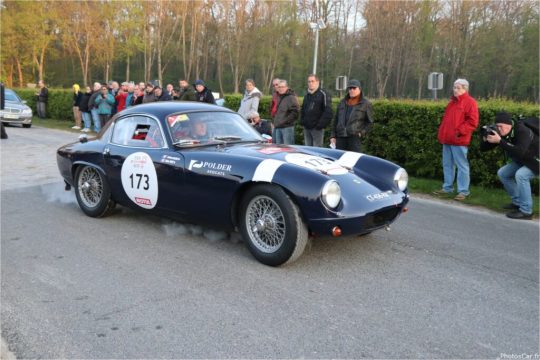

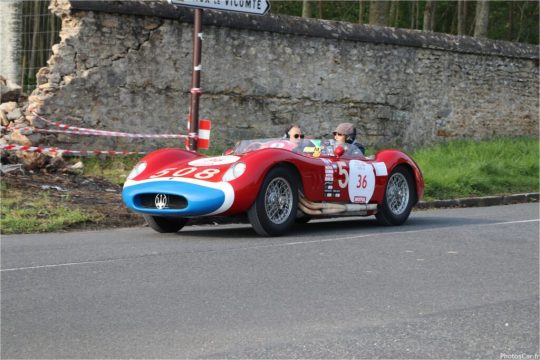

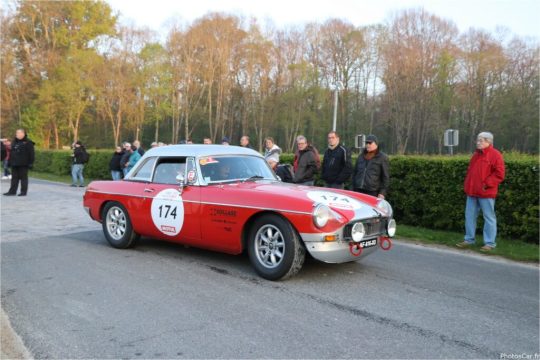

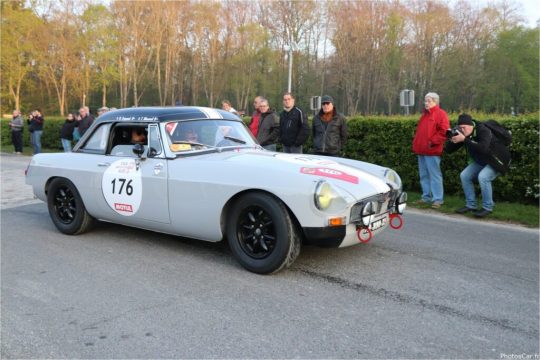


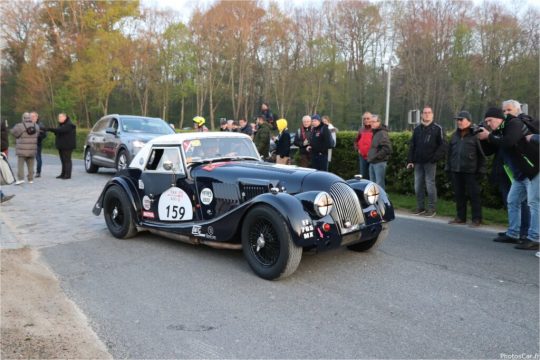

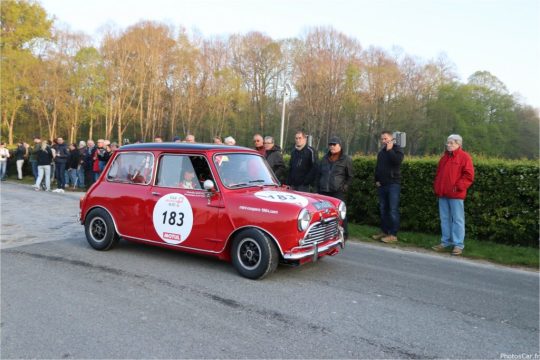

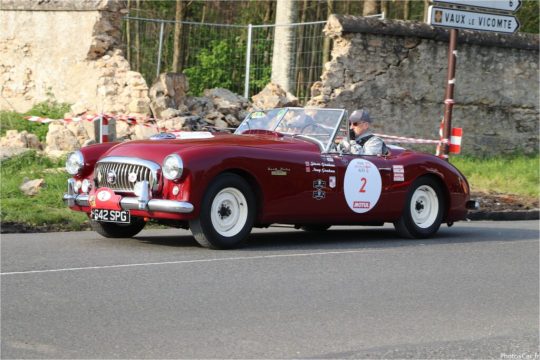
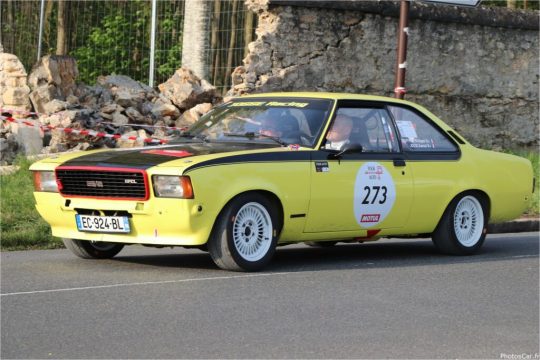
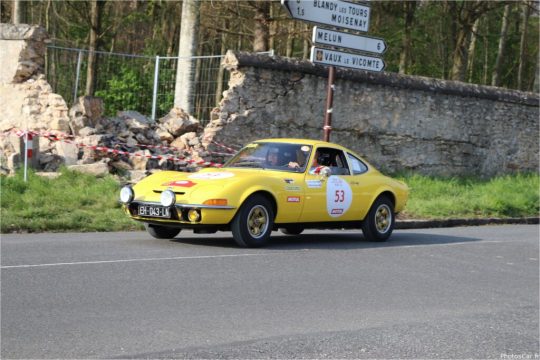


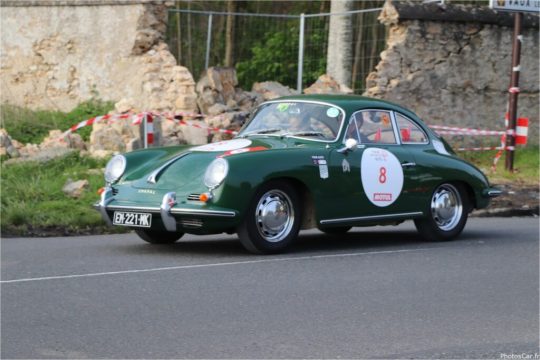
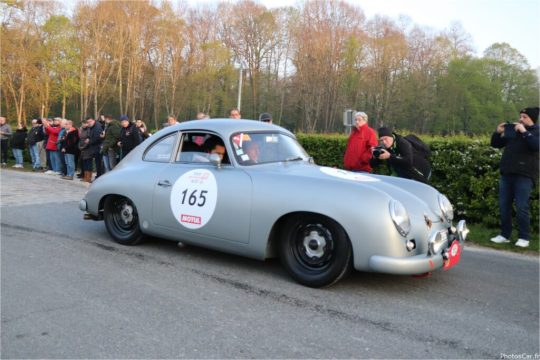
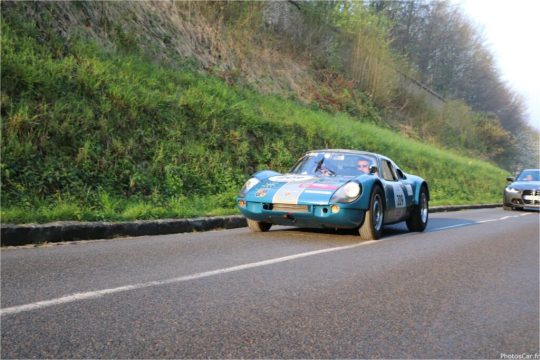

Read the full article
3 notes
·
View notes
Photo








1999 Ferrari 550 Maranello
#Ferrari#1999 Ferrari 550 Maranello#automobile#car#sports car#italian sports car#luxury#luxury car#luxury living#luxury lifestyle#rich#expensive#blu tour de france#blue#sexy
7 notes
·
View notes
Video
Wallpaper #182 by Laurent Quérité Via Flickr: 132 - Porsche 356 (A) 1600 Speedster de 1958 Tour Auto 2023 Pilote : Régis MATHIEU Copilote : Hélène MATHIEU Col de la Madeleine D19 Vaucluse France IMG_9525
#CanonFrance#Canon EF 100-400mm f/4.5-5.6L IS USM#Canonphotography#Canon EOS 7D#carlovers#carphotography#Car#Voiture#Automobile#Tour Auto 2023#Col de la Madeleine#Vaucluse#France#Porsche#Porsche 356#Fond d'écran#Wallpaper#Laurent Quérité#flickr
5 notes
·
View notes
Text

Our second Aberdonian of the day is Muriel Thompson who was a decorated Scottish World War I ambulance driver, racing driver and suffragist.
Thompson was born on 10th June 1875 in Aberdeen, Scotland to Agnes Marion Williamson, the second wife of Cornelius Thompson, a shipowner and marine architect. She was the fifth of eight children. Her grandfather George Thompson had been Lord Provost of Aberdeen and an MP for the city.
Thompson was an avid motorist, and from an early age she drove the family car. She and her brothers helped found the Brooklands Automobile Racing Club. On 4 July 1908 she won the first ladies’ motor race held at Brookland, the Ladies’ Bracelet Handicap, she caused quite a stir by beating the wife of the racetrack’s owner with metres to spare.
After the race, Muriel was greeted by cries of “women deserve the vote now!” She agreed, and was hired as a chauffeur by the Women’s Social and Political Union. Driving a green Austin with white wheels and purple stripes – the suffragette colours – she took Emmeline Pankhurst on her 1909 national tour
Her daredevil driving skills proved lifesaving during the First World War. In 1915, she signed up to the First Aid Nursing Yeomanry, and us Scots must have a slight snigger at the acronym, FANY.
Three months later, she was awarded the Knight’s Cross of the Order of Leopold II by King Albert of Belgium for evacuating wounded soldiers under fire. Alongside her Calais convoy, in 1917, she became one of the first women to drive for the British Army, who had until that point refused FANY’s services.
Thompers, as her colleagues called her, kept meticulous diaries while abroad. They reveal the horrors of war, but also the camaraderie and independence she experienced.
Muriel saved hundreds of lives during the war. In January 1918, she became Commanding Officer of the newly-formed St Omer convoy, and was awarded the Military Medal and the Croix de Guerre for her fearless fight to evacuate the injured during air raids.
Muriel returned to Britain two months before the war ended and resigned from FANY in 1922 – she was one of the bravest and best they had. Muriel died a few months before the Second World War broke out.
Muriel's medals include: Military Medal 1914-18; 1914-15 Star; British War Medal 1914-20; Allied Victory Medal 1914-19 with oak leaf for Mentioned in Dispatches; Order of Leopold II, Belgium, 1914-18, Badge of the 5th Class; Croix de Guerre, France 1914-18.
21 notes
·
View notes
